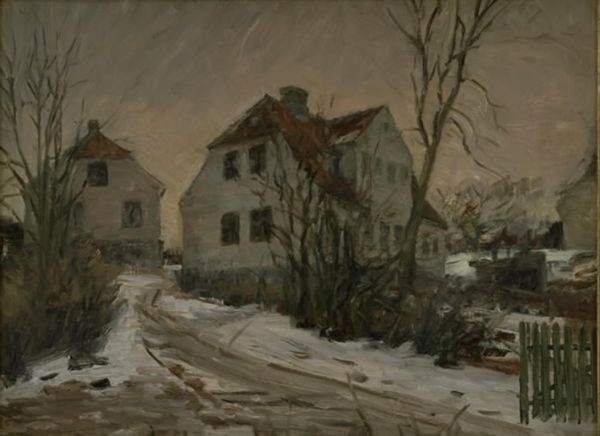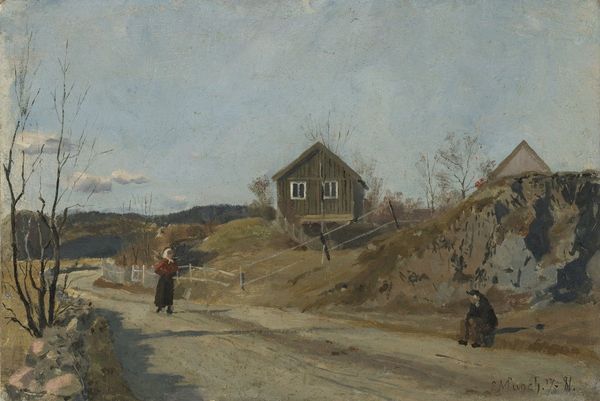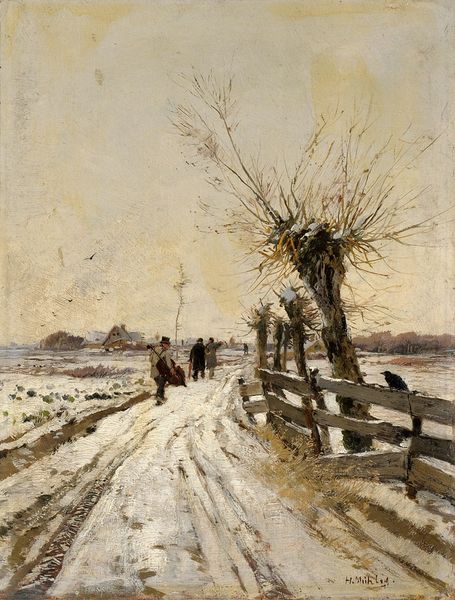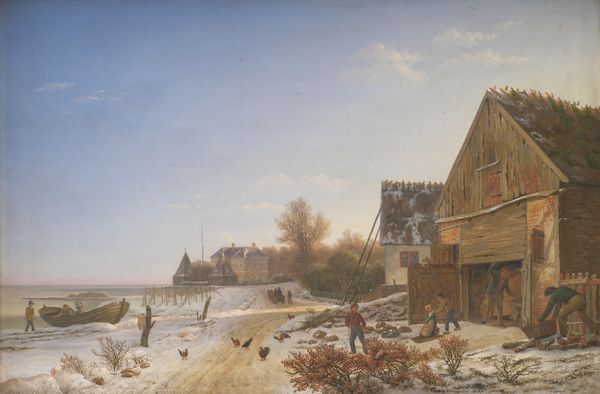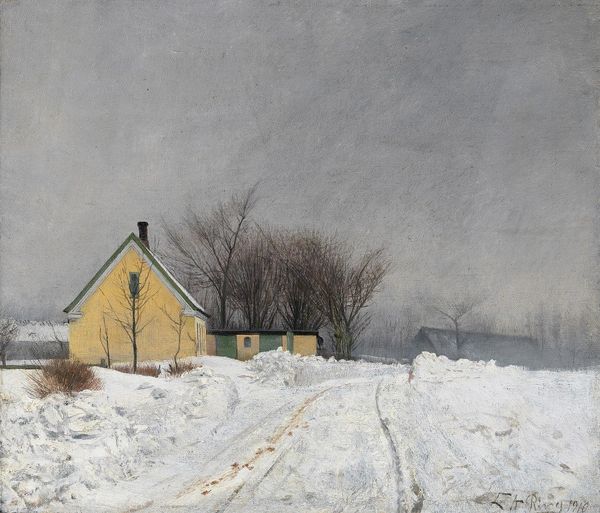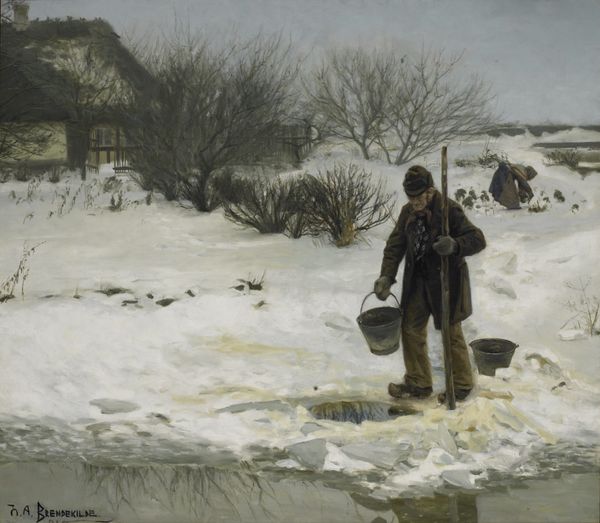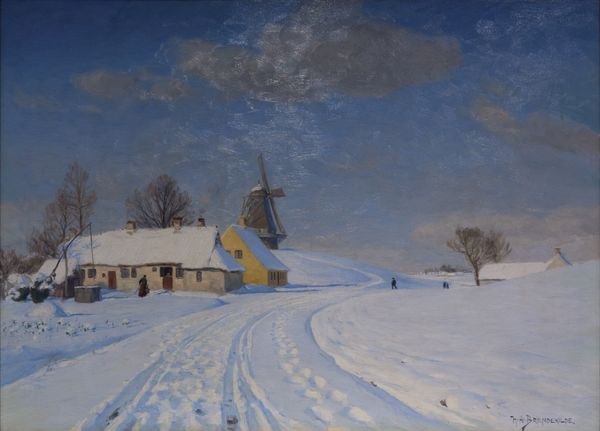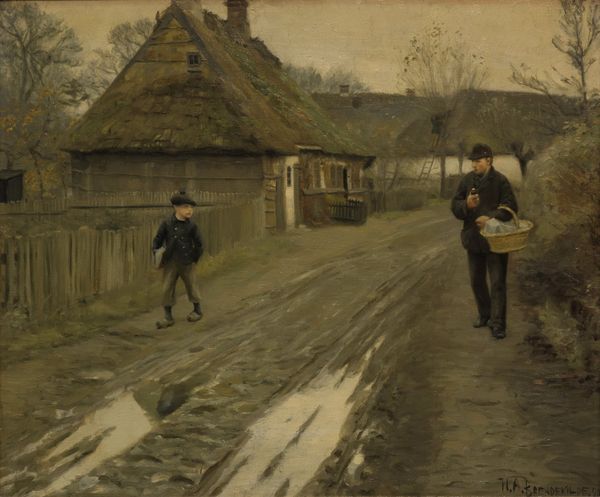
Dimensions: 127 cm (height) x 161 cm (width) (netto), 145.8 cm (height) x 179.5 cm (width) x 8.7 cm (depth) (brutto)
Curator: Welcome. We’re standing before L.A. Ring’s, "The Painter in the Village," completed in 1897. Ring, deeply rooted in Danish realism, presents us with a seemingly simple, yet compelling winter scene. Editor: My first impression is how cold it looks! That pervasive grey-white palette, the way the figures are bundled – it conveys a real sense of chill. And that's offset by what appears to be an oil-painted rendering of the landscape itself. Curator: Indeed. What’s fascinating is how Ring positions the artist within the village, actively capturing the landscape. The choice to paint outdoors aligns with Impressionistic ideals of plein-air painting and a commitment to record an immediate experience of the visible world. Ring however merges impressionistic approach with realistic themes from daily rural life. Editor: Absolutely. You can see the evidence of labor here—not just the painter at work, but in the houses, the materials suggesting particular kinds of craftsmanship and construction that are intrinsic to village life at the time. Look at the artist’s tools and the layers that capture the essence of his task in the wintry setting. It seems Ring captured something far deeper by showing the process itself. Curator: And consider Ring's relationship with institutions and traditions, for example, the Düsseldorf school and genre painting that had such impact at that time. His shift toward starker realism mirrors a broader societal transition away from idealized landscapes toward portraying everyday life, complete with its inherent challenges. This approach was key in establishing his public and critical recognition in Danish society. Editor: This scene tells a whole story through materiality – through labor and construction. I almost wonder, does the painting invite viewers to reflect on the very act of representation, how it translates into materials in front of us? Curator: Ring encourages us to see the inherent worth in rural settings. That his artwork can depict rural areas that reflect something far beyond than aesthetic admiration but serve also as key point of dialogue between artistic integrity and socio-cultural realities of the day. Editor: Seeing "The Painter in the Village" this way reminds me about the importance of acknowledging the work embedded in what we admire and see everyday. It makes me pause to consider the social and historical forces affecting everyone involved, including artists and subjects, who contribute to create these remarkable historical narratives in material form.
Comments
No comments
Be the first to comment and join the conversation on the ultimate creative platform.




